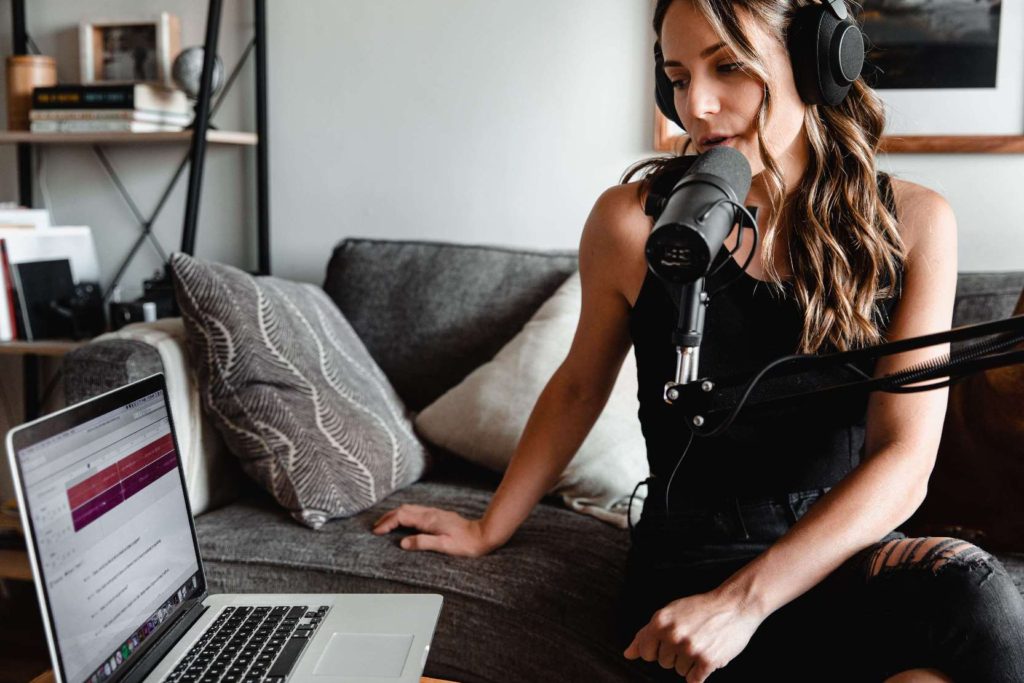If the likes of Felix Lengyel (xQc), Tyler Blevins (Ninja), Imane Any (Pokimane), and Joe Rogan have taught us anything, it’s that streaming is big business.
Whether you want to have fun or you’re trying to start your multimillion-dollar streaming career, you’ll need a device of some sort to transmit all your video or audio.
That device could easily be a laptop. This article dives deep into the use-case of laptops for streaming and what basic requirements a laptop used for streaming should meet.
Is Laptop Good for Streaming?
Laptops are quite suitable for streaming so long as you know what you’re looking for; they can live stream anything you have in mind. Here are a few examples.
Video Games
Whether it’s Twitch or Youtube, you can use a laptop to live stream games as you play them.
When live streaming games, your laptop has to keep the live stream software, the game, and whatever online platform you’re streaming through while operating simultaneously and smoothly.
A powerful processor, adequate random access memory, and a dedicated graphics card are the best ways to achieve this.
The processor makes it possible for your live streaming device to compute the millions of operations involved in each software without any latency, while the random access memory makes it easier to store and retrieve the information each process needs in real-time.
Finally, a good dedicated graphics card allows your laptop to live stream high-quality in-game video alongside a video of yourself without lagging or overworking your CPU to the extent that the CPU begins to overheat.
Podcasts
Luckily, podcasts aren’t as demanding on your laptop’s CPU as videogames when you are live streaming. However, the requirements are a bit different. Luckily, a good streaming laptop can take care of that too.
Because podcasts are purely audio, you’ll also need a high-quality microphone alongside the basic requirements necessary for streaming. When there’s a video distracting your audience, you can afford to be a little less strict about audio quality, but with podcasts, you can’t.
Most, if not all, laptops come with internal soundcards (microphones) that can be used for streaming. In particular, laptops that use IHDA (Intel high definition audio) soundcards are known to be the best available because they have the highest sampling frequencies.
They can sample frequencies of up to 192 kHz; the sampling frequency is the number of samples of audio your microphone can take in a single second. A higher sampling frequency means your microphone can take more audio samples.
More audio samples mean whoever is listening gets clear audio. What’s more, laptops allow you to record your podcast, store it on your laptop, edit it later, and stream it out when you want to.

Meetings
Laptops are also good for streaming meetings and conferences as they take place.
Two needs unique to professionals attending meetings are that they need to be able to transmit high-quality video of themselves to whomever they are in a meeting with, and they need good microphones to receive good audio in return.
A low-quality video that lags makes you look unprofessional and may distract from the meeting itself. Fortunately, some laptops come with internal webcams that can stream video at 1080p. For reference, that’s just a step below 2K, which some cinemas use for their movies.
Also, poor-quality audio interferes with communication, and precious time may be wasted trying to figure out what the other person is saying. Fortunately, many laptops come with built-in stereo speakers that help to prevent this problem from occurring.
Vlogging
With the advent of 2-in-1 laptops, laptops are no longer limited by weight when it comes to portability. 2-in-1 laptops like the Surface Pro 7 grant you the functionality of a high-end laptop without losing out on the convenience that a tablet might offer.
Moreover, laptops don’t suffer from the hardware limitations that a phone or tablet might have. The fastest processors can be found on laptops.
You’ll also need some digital image stabilization to keep the video looking good if you’re vlogging. Some laptops also come with in-built software that allows your webcam to stabilize the transitions between motions in your video.
Dedicated Streaming
If your streaming needs cut across a wide range of uses, you can use a laptop as a dedicated streaming device. A dedicated streaming laptop is one used purely for streaming and nothing else.
The advantage of this is that you automatically cut out a large chunk of what your main device is doing, whether it’s a desktop computer or something else. You derive the highest benefit from this if you are live streaming video because it puts more strain on your CPU than audio.
This can help to increase your frame rate and eliminate lagging or, at the very least, stop your CPU from overworking and overheating.
Next, let’s look at what you’ll need in a typical streaming laptop.
What Specs Do You Need to Stream on a Laptop?
The Processor
This is the most critical requirement because everything else runs because it tells them to. If all you’re doing is streaming audio, then a dual-core Intel Core i5 processor is enough to prevent latency.
Dual-core processors are better at minimizing energy loss and heat generation but aren’t as powerful as quad-core processors. If you’re going to be streaming video, especially for video games, you’ll need a quad-core Intel Core i7 processor.
The processor helps to compress and encode the video (i.e., minimize the size of the data transmitted without compromising quality and then convert the data to a digital format understandable by all devices) without experiencing lag.
Graphics Card
A dedicated graphics card is a must-have for anyone streaming 1080p, 60fps videos, or more. This is different from the typical GPU that comes with a laptop. A dedicated graphics card adds more processing power for handling video and is also upgradeable if need be.
Some laptops come with both an integrated and dedicated GPU, and that’s the sort you should get. When purchasing the graphic card, ensure that it has 6GB of virtual RAM, if not more. That is where visual data from a video game is stored while you’re playing it.
However, if you’re only streaming meetings, any GPU is fine, and 2GB of virtual RAM is sufficient.
RAM
You’ll need at least 4GB of RAM to run any streaming process without delivering choppy audio. However, if you’re focused on high-quality video that’s not from gaming, then you should get at least 8GB of RAM.
If you use the same device for gaming and streaming simultaneously, you should get 16GB of RAM.
Final Thoughts
You can use laptops for any streaming (e.g., video game streaming, podcasts, vlogging, etc.); when choosing a streaming laptop, there are many factors to consider, but your focus should be on the CPU, GPU, and RAM above all else.

